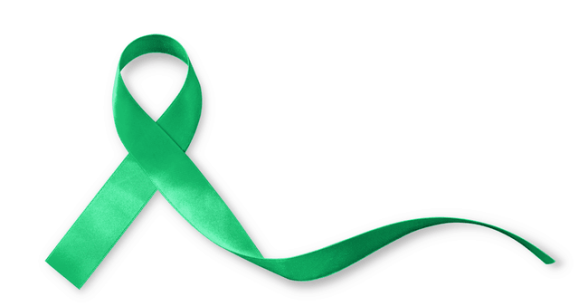Looking at “Independence” Through the Lens of Disability
After my first day of college classes, I wanted to quit.
I felt out of place and overwhelmed. As I sat with my mom in a local diner, I rattled off my fears – class sizes were bigger, the workload was intense, and my physical disability made maneuvering around the sprawling campus seem overwhelming. What if things weren’t accessible? What if the school was too big?
She was quiet as she listened, letting me voice my first-day frustrations, and then, she looked me in the eyes and without missing a beat, she said “You can do it,” in her trademark matter-of-fact tone.
She was sure. I, on the other hand, wasn’t as convinced.
While many of my peers were brimming with excitement to dive into the college life experience, I was terrified. To my classmates, college signaled freedom and the chance to do what you want, when you want. To me, though, college meant navigating the world alone for the first time.
Could I do it, I wondered? Was I even ready? I was born with Freeman-Sheldon Syndrome, a genetic bone and muscular disorder and have had more than 25 surgeries. Growing up, my mom and I were a matched set. Ours was a mother-daughter bond made even stronger because of my physical disability. She was there when I took my first wobbly steps at four, wearing braces that made my legs feel like weights. She was there as I zoomed down the sidewalk in my first motorized wheelchair at seven. And she was with me in those scary moments before I was wheeled into the operating room. Our bond is unbreakable.
As I got older, I relied on my mom in a way that my able-bodied peers didn’t – everything from showering and getting dressed in the morning to cooking dinner in the evening. In high school, that pivotal stage when teenagers get their first tastes of independence, I’d see my able-bodied classmates go on overnights or spontaneously make plans to hang out at the mall, and I remember feeling those familiar pangs of jealousy. This independence thing seemed so easy and effortless for them and I often wondered what exactly that felt like. My road to independence had taken quite a different path than my peers’, and this is the reality for many people with disabilities.
The teenage years are all about discovering who you are, full of eye-opening moments and experiences that shape the rest of your life. And as much as I was grateful for all the help my mom gave me, I felt like my burgeoning sense of self was floundering; it often felt like this elusive concept I just couldn’t grasp. Who was I? Who was I apart from being my mom’s disabled daughter? And, perhaps the scariest question of all, the one that I kept turning over in my head: How would I navigate the world, a world that wasn’t made for people with disabilities, without her?
It hit me on that January day as we sat across from each other in the diner: For the first time, my mom wouldn’t be right there next to me. She wouldn’t be the one who made sure the classrooms and busses were accessible. She wouldn’t be the one who visited my class to talk to my classmates about my disability. She wouldn’t be my #1 advocate anymore. That person would now be, well, me.
I’d be starting this new chapter completely on my own. I was terrified. But I went to class the next day. And the day after that. As the semester rolled on, I started doing more on my own. I got a job as a copy editor on the student newspaper, where I often stayed late proofreading pages. I also began taking an accessible bus around town to go out to eat and enjoy an afternoon of shopping. It was my first taste of independence, and with each new activity, I felt like I was exploring a whole new world. A world in which I didn’t need my mom to lift my wheelchair in her car and drive me where I wanted to go. I could get myself there, and it was a type of pride I’d never felt before.
The world seems huge and overwhelming when it’s not built for you. If I could tell young disabled people one thing, it would be this: Don’t be afraid to go at your own pace when it comes to seeking independence. Dip your toes in just a little, see how it feels and then adjust accordingly. Our society is so focused on a timetable of when and how we should become self-sufficient beings, but guess what? That timetable is ableist. It’s based on the able-bodied world and fails to take into account the needs and comfort levels of disabled people.
For that matter, we need to rethink our definition of independent altogether. This is something I never thought of until I got older. Andrew Pulrang, a disabled writer and activist, described a new way of looking at independence for the website Parents that makes a lot of sense: “Real independence is about being your own person, living life on your own terms, not about complete self-sufficiency. Independence isn’t about doing everything for yourself, the same way everyone else does. With the right tools and support, and adapting the usual ways of doing things, people with any kind of disability can achieve meaningful independence, whatever it may look like for that given person.”
Independence isn’t one-size-fits-all. In the end, it looks different for everyone. I wish I could tell my teenage self those wise words. May the next generation of people with disabilities hear that message loud and clear! You will get there – on your own time and in your own way.
About Rooted In Rights
Rooted in Rights exists to amplify the perspectives of the disability community. Blog posts and storyteller videos that we publish and content we re-share on social media do not necessarily reflect the opinions or values of Rooted in Rights nor indicate an endorsement of a program or service by Rooted in Rights. We respect and aim to reflect the diversity of opinions and experiences of the disability community. Rooted in Rights seeks to highlight discussions, not direct them. Learn more about Rooted In Rights



